Vama, Vāma, Vāmā: 30 definitions
Introduction:
Vama means something in Buddhism, Pali, Hinduism, Sanskrit, Jainism, Prakrit, Marathi, Hindi, Tamil. If you want to know the exact meaning, history, etymology or English translation of this term then check out the descriptions on this page. Add your comment or reference to a book if you want to contribute to this summary article.
In Hinduism
Purana and Itihasa (epic history)
Source: archive.org: Puranic EncyclopediaVāmā (वामा).—An attendant of Subrahmaṇya. (Mahābhārata Śalya Parva, Chapter 46, Stanza 12).
Source: archive.org: Shiva Purana - English TranslationVāma (वाम) is used as an epithet for Śiva, according to the Śivapurāṇa 2.2.41.—Accordingly, as Viṣṇu and others eulogized Śiva:—“[...] obeisance to Vāma, Vāmarūpa, Vāmanetra, Aghora, the great lord and the Vikaṭa. Obeisance to Tatpuruṣa, to Nātha, the ancient Puruṣa, the bestower of the four aims of life, Vratin, and Parameṣṭhin. Obeisance to you, Īśānas, Īśvara, Brahman, of the form of Brahman, the Supreme Soul”.
Source: Cologne Digital Sanskrit Dictionaries: The Purana Index1a) Vāma (वाम).—A name of Śiva.*
- * Bhāgavata-purāṇa IV. 3. 8.
1b) A son of Bhūta and Sarūpā: a Rudra.*
- * Bhāgavata-purāṇa VI. 6. 17.
1c) A son of Kṛṣṇa and Bhadrā.*
- * Bhāgavata-purāṇa X. 61. 17.
1d) A horse of the moon's chariot;1 sons of Kratu.2
2) Vāmā (वामा).—A Śakti.*
- * Brahmāṇḍa-purāṇa IV. 19. 73; 44. 140.
Vāmā (वामा) refers to the name of a Lady mentioned in the Mahābhārata (cf. IX.45.16). Note: The Mahābhārata (mentioning Vāmā) is a Sanskrit epic poem consisting of 100,000 ślokas (metrical verses) and is over 2000 years old.
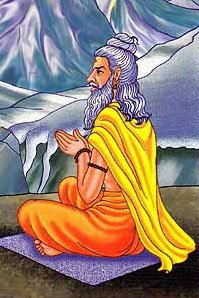
The Purana (पुराण, purāṇas) refers to Sanskrit literature preserving ancient India’s vast cultural history, including historical legends, religious ceremonies, various arts and sciences. The eighteen mahapuranas total over 400,000 shlokas (metrical couplets) and date to at least several centuries BCE.
Natyashastra (theatrics and dramaturgy)
Source: Wisdom Library: Nāṭya-śāstraVāma (वाम, “hostile”) refers to a term to be used by women who is angered addressing their beloved, according to the Nāṭyaśāstra chapter 24. Accordingly, “he who even being forbidden to do anything does that very thing, and resolutely, is called ‘hostile’ (vāma)”.
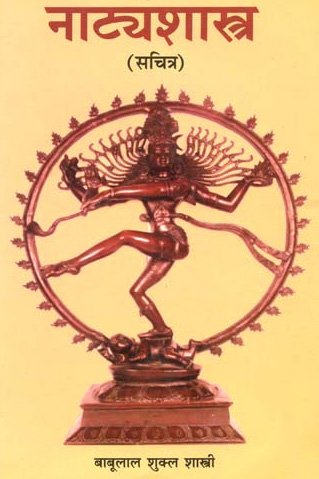
Natyashastra (नाट्यशास्त्र, nāṭyaśāstra) refers to both the ancient Indian tradition (shastra) of performing arts, (natya—theatrics, drama, dance, music), as well as the name of a Sanskrit work dealing with these subjects. It also teaches the rules for composing Dramatic plays (nataka), construction and performance of Theater, and Poetic works (kavya).
Shaivism (Shaiva philosophy)
Source: Shodhganga: Iconographical representations of ŚivaVāma (वाम) or Vāmāgama refers to one of upāgamas (supplementary scriptures) of the Cintyāgama which is one of the twenty-eight Siddhāntāgama: a classification of the Śaiva division of Śaivāgamas. The Śaivāgamas represent the wisdom that has come down from lord Śiva, received by Pārvatī and accepted by Viṣṇu. The purpose of revealing upāgamas (e.g., Vāma Āgama) is to explain more elaborately than that of mūlāgamas (e.g., Cintya-āgama) and to include any new idea if not dealt in mūlāgamas.
Source: Brill: Śaivism and the Tantric Traditions1) Vāma (वाम) refers to the “left (side)”, according to the Guhyasūtra chapter 9.—Accordingly, “[...] [The Lord spoke]:—[...] On one half, there should be a forehead mark; on one half a [forehead] eye. A ring [should be] in one ear; a [pendant] ear-ornament in one ear. He should put a trident in his right hand and a breast on his left side (vāma-pārśva), a girdle on the left half, a bangle on the left arm, a woman’s anklet on the left leg, a man’s anklet on the right leg and a muñja-grass belt. At the hips, he should put a loin-cloth on the right and wear a woman’s garment on the left.”.
2) Vāma (वाम) or Vāmabhāga refers to “(one’s) left side”, according to the 13th-century Matsyendrasaṃhitā: a Kubjikā-Tripurā oriented Tantric Yoga text of the Ṣaḍanvayaśāmbhava tradition from South India.—Accordingly, “[Visualisation of Parameśvara]:—[...] He is in the prime of his youth and has all the auspicious characteristics. He has the great Ajagava bow placed on his left side (sva-vāma-bhāga). On his right, he has five glowing arrows. He is shining like a blue lotus. On his chest there is a glittering garland of blue lotuses. He is the Lord. [...]”.
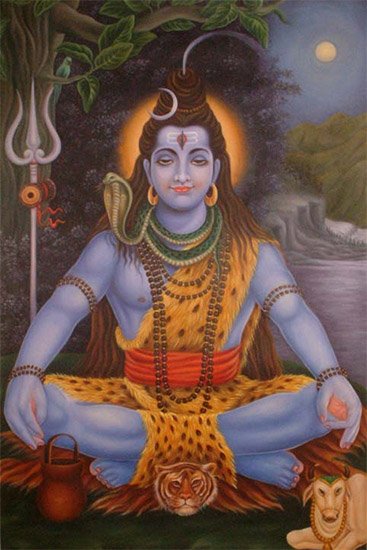
Shaiva (शैव, śaiva) or Shaivism (śaivism) represents a tradition of Hinduism worshiping Shiva as the supreme being. Closely related to Shaktism, Shaiva literature includes a range of scriptures, including Tantras, while the root of this tradition may be traced back to the ancient Vedas.
Shaktism (Shakta philosophy)
Source: Google Books: Manthanabhairavatantram1) Vāmā (वामा) refers to the Goddess (of the Practice of the Left—vāmācāra), according to the second recension of the Yogakhaṇḍa of the Manthānabhairavatantra, a vast sprawling work that belongs to a corpus of Tantric texts concerned with the worship of the goddess Kubjikā.—The goddess is both the Triangle and the Point (bindu) in the centre of it. The former is called ‘bhaga’—the Womb. The latter is the living being (jīva) it contains, which is formed by the union of the male and female seed. This “ball of vital seed” is feminine. Generated by the fusion of opposites, it is the androgynous embryonic goddess. It rotates in an anticlockwise direction, that is, to the left—vāmā—and it is the woman—vāmā—who is the goddess Vāmā of the Practice of the Left (vāmācāra).
The Kubjikāmatatantra seems to say little more than that the goddess is called the ‘goddess of the left’ because she extends her left hand. Normally impure, this is the hand used for special Tantric rituals which, therefore, came to be called those of the ‘left hand’. As the left is the feminine side, the side of power (śakti), magical, worldly and spiritual accomplishment (siddhi), such rites are generally related to goddesses or feminine beings who aid the adept to achieve these things.
2) Vāmā (वामा) or Vāmāgranthi refers to “Vāmā’s Knot” and represents one of the “sixteen knots” (granthi), according to the Ṣaṭsāhasrasaṃhitā, an expansion of the Kubjikāmatatantra: the earliest popular and most authoritative Tantra of the Kubjikā cult.—Accordingly, “(1) The Knot called Ananta, which is HAṂSA, should be placed (on the body). It is at the middle toe of the sixteen parts (of the body). The Knot of Time is below the ankle. [...] (4) Jyeṣṭhā’s Knot is below the hip and (5) Vāmā’s Knot is (above) on the other side. [...]”.
The sixteen Knots [i.e., vāmā-granthi] are parts of the goddess’s body. Accordingly, they are projected into the adept’s body to transform it into the Triple Fort, that is, the triangular body of the goddess replete with the energies of the sacred seats. She is both with form, consisting of the letters and mantras, and without form as the Transmental (manonmanī) energy of the god.
Source: Shodhganga: Iconographical representations of Śiva (shaktism)Vāma (वाम) or Vāmatantra refers to one of the thirty-three Dakṣiṇatantras, belonging to the Śāktāgama (or Śāktatantra) division of the Āgama tradition. The Śāktāgamas represent the wisdom imparted by Devī to Īśvara and convey the idea that the worship of Śakti is the means to attain liberation. According to the Pratiṣṭhālakṣaṇasamuccaya of Vairocana, the Śāktatantras are divided into to four parts, the Vāma-tantra belonging to the Dakṣiṇa class.
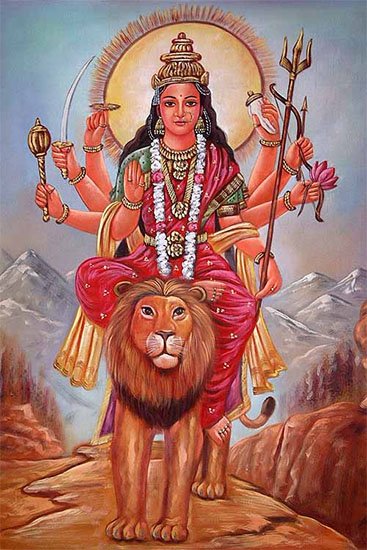
Shakta (शाक्त, śākta) or Shaktism (śāktism) represents a tradition of Hinduism where the Goddess (Devi) is revered and worshipped. Shakta literature includes a range of scriptures, including various Agamas and Tantras, although its roots may be traced back to the Vedas.
Pancaratra (worship of Nārāyaṇa)
Source: Shodhganga: Iconographical representations of Śiva (pancaratra)Vāma (वाम) or Vāmasaṃhitā is the name of a Vaiṣṇava Āgama scripture, classified as a tāmasa type of the Muniprokta group of Pāñcarātra Āgamas. The vaiṣṇavāgamas represent one of the three classes of āgamas (traditionally communicated wisdom).—Texts of the Pāñcara Āgamas are divided in to two sects. It is believed that Lord Vāsudeva revealed the first group of texts which are called Divya and the next group is called Muniprokta which are further divided in to three viz. a. Sāttvika. b. Rājasa. c. Tāmasa (e.g., Vāma-saṃhitā).
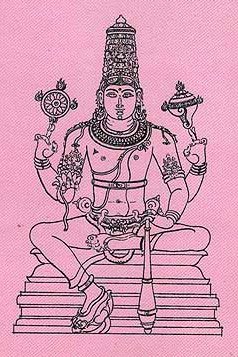
Pancaratra (पाञ्चरात्र, pāñcarātra) represents a tradition of Hinduism where Narayana is revered and worshipped. Closeley related to Vaishnavism, the Pancaratra literature includes various Agamas and tantras incorporating many Vaishnava philosophies.
Ayurveda (science of life)
Source: archive.org: Vagbhata’s Ashtanga Hridaya Samhita (first 5 chapters)Vama (वम) refers to “vomiting”, mentioned in verse 4.18 of the Aṣṭāṅgahṛdayasaṃhitā (Sūtrasthāna) by Vāgbhaṭa.—Accordingly, “[...] Erysipelas, urticaria, leprosy itching of the eyes, jaundice, and fever as well as cough, dyspnea, palpitation of the heart, freckles of the face, and swellings of the skin (result) from (suppressed) vomiting [viz., vama]. A gargle, an inhalant, a fast, after one has eaten pungent (food)—its ejection, gymnastics, a bloodletting, and a purgative (are) commended in this case”.
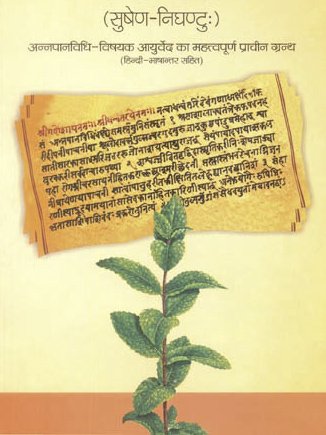
Āyurveda (आयुर्वेद, ayurveda) is a branch of Indian science dealing with medicine, herbalism, taxology, anatomy, surgery, alchemy and related topics. Traditional practice of Āyurveda in ancient India dates back to at least the first millenium BC. Literature is commonly written in Sanskrit using various poetic metres.
In Buddhism
Tibetan Buddhism (Vajrayana or tantric Buddhism)
Source: 84000: Sampuṭodbhava Tantra (Emergence from Sampuṭa)Vāmā (वामा) refers to one of the primary thirty-two energy-channels in the body, according to the Sampuṭodbhavatantra chapter 1.—Accordingly, “[Vajragarbha asked, ‘What subtle energy channels are in the body?’]—The Blessed One said, ‘There are one hundred and twenty of them, corresponding to the divisions within the four cakras. The chief ones, those with bodhicitta as their innate nature, are thirty-two in number. They are: [i.e., Vāmā] [...]’.”.
Source: OSU Press: Cakrasamvara SamadhiVāma (वाम) refers to the “left (arm)”, according to the Cakrasaṃvara Samādhi [i.e., Cakrasamvara Meditation] ritual often performed in combination with the Cakrasaṃvara Samādhi, which refers to the primary pūjā and sādhanā practice of Newah Mahāyāna-Vajrayāna Buddhists in Nepal.—Accordingly, “A red twilight, producing a sharp essence, an edge as bright as seven suns, A knife killing all enemies, a gleaming immortal striker held by the right arm (savya-doṣan [doṣṇā]). Held by the left arm (vāma-doṣan [doṣṇā]), the pure mind of a lotus, now a banner full of blood, A kālpā after the first, surrounded by a head, a half a head of loose hair”.
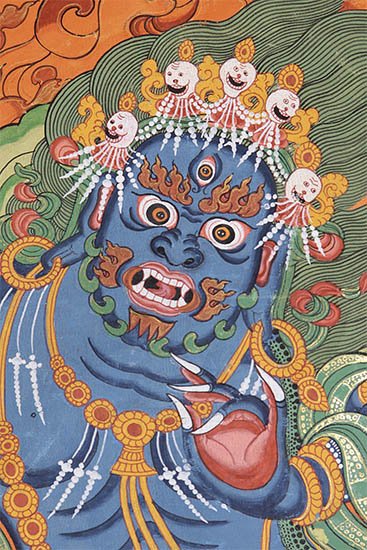
Tibetan Buddhism includes schools such as Nyingma, Kadampa, Kagyu and Gelug. Their primary canon of literature is divided in two broad categories: The Kangyur, which consists of Buddha’s words, and the Tengyur, which includes commentaries from various sources. Esotericism and tantra techniques (vajrayāna) are collected indepently.
In Jainism
General definition (in Jainism)
Source: Wisdom Library: JainismVāmā (वामा) is the mother of Pārśvanātha according to Śvetāmbara (but she is named Varmilā according to Digambara), according to the Ācāradinakara (14th century work on Jain conduct written by Vardhamāna Sūri). Pārśvanātha is the twenty-third of twenty-four Tīrthaṅkaras in Janism. A Tīrthaṅkara is an enlightened being who has conquered saṃsāra (cycle of birth and death), leaving behind him a path for others to follow.
The husband of Vāmā is Aśvasena. It is an ancient Jain practice to worship the Tīrthaṅkara’s parents in various rites, such as the pratiṣṭhāvidhi.
Source: archive.org: The Jaina IconographyVāmā (वामा) or Brahmā is the mother of Pārśvanātha: the twenty-third of twenty-four Tīrthaṃkaras or Jinas, commonly depicted in Jaina iconography.—Pārśvanātha was probably born about 817 and died about 717 B.C. His father Aśvasena was the King of Benares. His mother’s name was Vāmā or Brahmā. Pārśva was a brave warrior and once he carried his victorious arms down to Kaliṅga. He married the daughter of King Prasenajit, King of Kośala, but like Prince Siddhārtha, he left his princess to follow the life of an ascetic at 30 years of age.

Jainism is an Indian religion of Dharma whose doctrine revolves around harmlessness (ahimsa) towards every living being. The two major branches (Digambara and Svetambara) of Jainism stimulate self-control (or, shramana, ‘self-reliance’) and spiritual development through a path of peace for the soul to progess to the ultimate goal.
Languages of India and abroad
Pali-English dictionary
Source: BuddhaSasana: Concise Pali-English Dictionaryvāma : (adj.) left; agreeable.
Source: Sutta: The Pali Text Society's Pali-English DictionaryVāma, (adj.) (Vedic vāma) 1. left, the left side (always opposed to dakkhiṇa) J. IV, 407 (°akkhi); Pv IV. 78; Miln. 295 (°gāhin left-handed); PvA. 178 (°passa left side). As “northern” at J. V, 416. vāmaṃ karoti to upset J. IV, 101.—Instr. vāmena on the left Sn. p. 80. ‹-› Abl. vāmato from or on the left J. III, 340; Pv. II, 320 (as much as “reverse”; PvA. 87=vilomato).—2. beautiful; only in cpd. vām-ūru having beautiful thighs D. II, 266; J. II, 443. So read at both places for vāmuru. (Page 609)
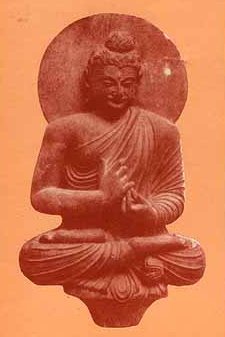
Pali is the language of the Tipiṭaka, which is the sacred canon of Theravāda Buddhism and contains much of the Buddha’s speech. Closeley related to Sanskrit, both languages are used interchangeably between religions.
Marathi-English dictionary
Source: DDSA: The Molesworth Marathi and English Dictionaryvāma (वाम).—a (S) Left, not right. 2 Reverse, contrary, inverted. vāmabāhu The left arm; vāmahasta The left hand; vāmāṅga The left side.
--- OR ---
vāma (वाम).—n ( A Used only in conjunction with the word karja, as karjavāma) Debt.
--- OR ---
vāma (वाम).—m pl P Spasms (esp. in the epidemic Cholera). v vaḷa. 2 f m See vāmba f m.
Source: DDSA: The Aryabhusan school dictionary, Marathi-Englishvāma (वाम).—a Left. Reverse. n Debt. m pl Spasms.
Marathi is an Indo-European language having over 70 million native speakers people in (predominantly) Maharashtra India. Marathi, like many other Indo-Aryan languages, evolved from early forms of Prakrit, which itself is a subset of Sanskrit, one of the most ancient languages of the world.
Sanskrit dictionary
Source: DDSA: The practical Sanskrit-English dictionaryVama (वम).—Ejecting, vomiting, giving out.
Derivable forms: vamaḥ (वमः).
--- OR ---
Vāma (वाम).—a. Left (opp. dakṣiṇa); विलोचनं दक्षिणमञ्जनेन संभाव्य तद्वञ्चितवामनेत्रा (vilocanaṃ dakṣiṇamañjanena saṃbhāvya tadvañcitavāmanetrā) R.7.8; Meghadūta 8,98.
2) Being or situated on the left side; वामश्चायं नदति मधुरं चातकस्ते सगन्धः (vāmaścāyaṃ nadati madhuraṃ cātakaste sagandhaḥ) Meghadūta 9; (vāmena is used adverbially in the same sense; e. g. vāmenātra vaṭastamadhvagajanaḥ sarvātmanā sevate K. P.1).
3) (a) Reverse, contrary, opposite, adverse, unfavourable; तदहो कामस्य वामा गतिः (tadaho kāmasya vāmā gatiḥ) Gītagovinda 12; Mālatīmādhava (Bombay) 9.8; Bhaṭṭikāvya 6.17; (b) Acting contrary, of an opposite nature; यान्त्येवं गृहिणीपदं युवतयो वामाः कुलस्याधयः (yāntyevaṃ gṛhiṇīpadaṃ yuvatayo vāmāḥ kulasyādhayaḥ) Ś.4.18. (c) Perverse, crooked-natured, refractory; Ś.6. (d Coy (in love). (e) Hard, cruel.
4) Vile, wicked, base low, bad; उवाच वामं चक्षुर्भ्यामभिवीक्ष्य दहन्निव (uvāca vāmaṃ cakṣurbhyāmabhivīkṣya dahanniva) Bhāgavata 4.2.8; आसक्तास्तास्वमी मूढा वामशीला हि जन्तवः (āsaktāstāsvamī mūḍhā vāmaśīlā hi jantavaḥ) Kirātārjunīya 11.24.
5) Lovely, beautiful, charming; as in वामलोचना (vāmalocanā); वामोरू (vāmorū); वामभ्रूः वामस्वभाव (vāmabhrūḥ vāmasvabhāva) q. v.
6) Short.
-maḥ 1 A sentient being, an animal.
2) Name of Śiva.
3) Of Cupid, the god of love.
4) A snake.
5) An udder, a breast.
6) Prohibited or forbidden act or practice (as drinking wine).
7) The left hand.
-mam 1 Wealth, possessions.
2) Any lovely or desirable thing.
3) Adversity, misfortune.
--- OR ---
Vāmā (वामा).—
1) A woman.
2) A lovely woman; मधु द्राक्षा साक्षादमृतमथ वामाधरसुधा (madhu drākṣā sākṣādamṛtamatha vāmādharasudhā) Bv.4.39,42.
3) Name of Gaurī.
4) Of Lakṣmī.
5) Of Sarasvatī.
Source: Cologne Digital Sanskrit Dictionaries: Shabda-Sagara Sanskrit-English DictionaryVama (वम).—mf. (-maḥ-mī) Vomiting. E. vam to vomit, aff. ac; also vamana and vami .
--- OR ---
Vāma (वाम).—mfn.
(-maḥ-mā-maṃ) 1. Left, not right. 2. Reverse, contrary, inverted. 3. Beautiful, pleasing. 4. Vile, base, wicked. 5. Short. 6. Crooked. m.
(-maḥ) 1. A name of Siva. 2. Kama or Cupid. 3. An udder, a breast. 4. A potherb, (Chenopodium album.) 5. An animal, a sentient being. 6. A snake. n.
(-maṃ) Wealth, possessions. f.
(-mā) 1. A woman. 2. Gouri. 3. Lakshmi. 4. Saraswati. f. (-mī) 1. A mare. 2. A she-ass. 3. A young female elephant. 4. The female of the jackal. E. vā to go, Unadi aff. man .
Source: Cologne Digital Sanskrit Dictionaries: Benfey Sanskrit-English DictionaryVama (वम).—[vam + a], m., and f. mī, Vomiting.
--- OR ---
Vāma (वाम).—I. adj. 1. Left (not right), [Rājataraṅgiṇī] 5, 97; [Meghadūta, (ed. Gildemeister.)] 94. 2. Reverse, adverse, [Pañcatantra] ii. [distich] 87; opposite, [Śākuntala, (ed. Böhtlingk.)] [distich] 93 (those who act in an opposite way). 3. Bad, wicked, crooked, [Kirātārjunīya] 11, 24. 4. Short. 5. Beautiful, [Pañcatantra] i. [distich] 152. Ii. m. 1. Śiva. 2. Kāma. 3. An udder. 4. An animal. 5. A snake. Iii. f. mā. 1. A woman. 2. Gaurī. 3. Lakṣmī. 4. Sarasvatī. Iv. f. mī. 1. A mare, [Raghuvaṃśa, (ed. Stenzler.)] 5, 32. 2. A she-ass. 3. A young female elephant. 4. The female of a jackal. V. n. Wealth,
— Cf. [Old High German.] winistar; [Anglo-Saxon.] wynstre.
Source: Cologne Digital Sanskrit Dictionaries: Cappeller Sanskrit-English DictionaryVāma (वाम).—1. [feminine] ī & ā dear, pleasant, lovely, beautiful; fond of, eager or greedy for (—°). [masculine] [Epithet] of Śiva, a man’s name. [feminine] vāmā a (beautiful) woman; [feminine] vāmī a female or she- (ass, camel etc.); [neuter] anything dear or precious, wealth, goods, etc.
--- OR ---
Vāma (वाम).—2. [adjective] left (not right), adverse, contrary, refractory, stubborn, prude, coy, cruel, wicked, bad; [neuter] adversity, mischief. Abstr. tā† [feminine], tva† [neuter]
Source: Cologne Digital Sanskrit Dictionaries: Monier-Williams Sanskrit-English Dictionary1) Vama (वम):—[from vam] mf(ī)n. vomiting, ejecting, giving out, [Horace H. Wilson]
2) [v.s. ...] m. = vāma [gana] jvalādi.
3) Vāma (वाम):—[from vānta] 1. vāma m. (for 2. and 3. See [column]2) the act of vomiting [gana] jvalādi
4) 2. vāma mf(ī or ā)n. ([from] √1. van; for 1. See [column]1) lovely, dear, pleasant, agreeable, fair, beautiful, splendid, noble, [Ṛg-veda] etc. etc.
5) (ifc.) striving after, eager for, intent upon, fond of [Kāvya literature; Kathāsaritsāgara; Rājataraṅgiṇī]
6) m. the female breast, [cf. Lexicographers, esp. such as amarasiṃha, halāyudha, hemacandra, etc.]
7) the god of love, [cf. Lexicographers, esp. such as amarasiṃha, halāyudha, hemacandra, etc.]
8) Name of Śiva, [Bhāgavata-purāṇa]
9) of a Rudra, [ib.]
10) of Varuṇa, [cf. Lexicographers, esp. such as amarasiṃha, halāyudha, hemacandra, etc.]
11) (with Śaivas) = vāma-deva-guhya, [Sarvadarśana-saṃgraha]
12) of a son of Ṛcīka, [Mahābhārata] ([Bombay edition] rāma)
13) of a son of Kṛṣṇa and Bhadrā, [Bhāgavata-purāṇa]
14) of a prince (son of Dharma), [Catalogue(s)]
15) of a son of Bhaṭṭa-nārāyaṇa, [Kṣitīśa-vaṃśāvalī-carita] (cf. -deva)
16) of one of the Moon’s horses, [Viṣṇu-purāṇa]
17) m. or n. a kind of pot-herb, Chenopodium Album, [cf. Lexicographers, esp. such as amarasiṃha, halāyudha, hemacandra, etc.]
18) Vāmā (वामा):—[from vāma] f. a beautiful woman, any woman or wife, [Pañcarātra; Sāhitya-darpaṇa]
19) [v.s. ...] a [particular] form of Durgā, [Purāṇa]
20) [v.s. ...] a [particular] Śakti, [Hemādri’s Caturvarga-cintāmaṇi]
21) [v.s. ...] Name of Lakṣmī, [Horace H. Wilson]
22) [v.s. ...] of Sarasvatī, [ib.]
23) [v.s. ...] of one of the Mātṛs attending on Skanda, [Mahābhārata]
24) [v.s. ...] of the mother of Pārśva (the 23rd Arhat of the present Avasarpiṇī), [cf. Lexicographers, esp. such as amarasiṃha, halāyudha, hemacandra, etc.]
25) Vāma (वाम):—n. a lovely thing, any dear or desirable good (as gold, horses etc.), wealth, fortune, [Ṛg-veda; Atharva-veda; Brāhmaṇa; Chāndogya-upaniṣad]
26) mfn. relating to a mare, [Patañjali] (cf. under ī f. above).
27) 3. vāma mf(ā)n. (perhaps originally identical with 2. above) left, not right, being or situated on the left side, [Śatapatha-brāhmaṇa] etc. etc. (the quivering of the left eye or arm is supposed to be a good omen in women and of the left arm a bad omen in men)
28) reverse, adverse, contrary, opposite, unfavourable, [Kāvya literature; Kathāsaritsāgara]
29) crooked, oblique (am ind. sideways), [Bhāgavata-purāṇa]
30) refractory, coy (in love), [Sāhitya-darpaṇa]
31) acting in the opposite way or differently, [Śakuntalā iv, 18]
32) hard, cruel, [Kāvya literature; Purāṇa]
33) vile, wicked, base, low, bad, [Kirātārjunīya]
34) m. or n. the left side (vāmād dakṣiṇam, from the left to the right; vāmena, on the left side), [Kāvya literature; Kathāsaritsāgara]
35) m. the left hand, [Rāmatāpanīya-upaniṣad]
36) a snake, [cf. Lexicographers, esp. such as amarasiṃha, halāyudha, hemacandra, etc.]
37) an animal, sentient being, [cf. Lexicographers, esp. such as amarasiṃha, halāyudha, hemacandra, etc.]
38) n. adversity, misfortune, [Kathāsaritsāgara]
39) the left-hand practices of the followers of the Tantras (= vāmācāra q.v.), [Catalogue(s)]
Source: Cologne Digital Sanskrit Dictionaries: Yates Sanskrit-English Dictionary1) Vama (वम):—[(maḥ-mī)] 1. m. f. Vomiting.
2) Vāma (वाम):—[(maḥ-mā-maṃ) a.] Left (hand); reverse; pleasing; vile; short. crooked. m. Shiva, Kāma; udder; animal. n. Wealth. f. A woman, Gauri, &c. f. mī A mare; sheass; female elephant or jackal.
Source: DDSA: Paia-sadda-mahannavo; a comprehensive Prakrit Hindi dictionary (S)Vama (वम) in the Sanskrit language is related to the Prakrit words: Vāma, Vāmā.
[Sanskrit to German]
Sanskrit, also spelled संस्कृतम् (saṃskṛtam), is an ancient language of India commonly seen as the grandmother of the Indo-European language family (even English!). Closely allied with Prakrit and Pali, Sanskrit is more exhaustive in both grammar and terms and has the most extensive collection of literature in the world, greatly surpassing its sister-languages Greek and Latin.
Hindi dictionary
Source: DDSA: A practical Hindi-English dictionary1) Vāma (वाम) [Also spelled vam]:—(a) left, sinistral; reverse, contrary; adverse, perverse; vile, base; ~[tā] perversity; leftism, sinistrality; —[pāśrva] left flank; sinistral; —[pāśrvatā] sinistrality; ~[pārśvika] sinistral; ~[mārga] the Tantrik cult (which prescribes wine, woman, etc. as essentials); ~[mārgī] a follower of ~[mārga] pertaining to the ~[mārga].
2) Vāmā (वामा):—(nf) a woman.
...
Prakrit-English dictionary
Source: DDSA: Paia-sadda-mahannavo; a comprehensive Prakrit Hindi dictionary1) Vama (वम) in the Prakrit language is related to the Sanskrit word: Vam.
2) Vāma (वाम) also relates to the Sanskrit word: Vama.
3) Vāma (वाम) also relates to the Sanskrit word: Vāma.
4) Vāma (वाम) also relates to the Sanskrit word: Vyāma.
5) Vāmā (वामा) also relates to the Sanskrit word: Vāmā.
Prakrit is an ancient language closely associated with both Pali and Sanskrit. Jain literature is often composed in this language or sub-dialects, such as the Agamas and their commentaries which are written in Ardhamagadhi and Maharashtri Prakrit. The earliest extant texts can be dated to as early as the 4th century BCE although core portions might be older.
Kannada-English dictionary
Source: Alar: Kannada-English corpusVāma (ವಾಮ):—
1) [adjective] left; leftward; beng on the leftside.
2) [adjective] lovely; pleasant; agreeable.
3) [adjective] opposing; contradicting; adverse.
4) [adjective] crooked; bent; not straight; oblique.
5) [adjective] base; low.
6) [adjective] vile; wicked; depraved.
7) [adjective] not tall or long; short; undersized; dwarfish.
--- OR ---
Vāma (ವಾಮ):—
1) [noun] that which is opposite to right; left.
2) [noun] all or part of the left side.
3) [noun] the quality of being lovely, charming; charm; loveliness.
4) [noun] that which is beautiful, lovely.
5) [noun] a desired, wished for thing.
6) [noun] an auspicious, propitious thing.
7) [noun] an opposed condition; resistance, contradiction, contrast, hostility, etc.
8) [noun] any happening that causes harm or damage; misfortune.
9) [noun] the state of having much money or property; affluence; wealth.
10) [noun] Śiva.
11) [noun] Kāma, the Love-God.
12) [noun] a baglike mammary organ in cows, containing four glands, each with a separate teat.
Kannada is a Dravidian language (as opposed to the Indo-European language family) mainly spoken in the southwestern region of India.
See also (Relevant definitions)
Starts with (+231): Vamabhadra, Vamabhaga, Vamabhaj, Vamabhashin, Vamabhrit, Vamabhrittva, Vamabhru, Vamabhuja, Vamacakra, Vamacandra, Vamacara, Vamacarasiddhanta, Vamacari, Vamacarin, Vamachara, Vamacharin, Vamachuda, Vamacuda, Vamacudini, Vamacukkilam.
Ends with (+20): Ajmodavama, Akshavama, Anavama, Anovama, Antivama, Anuvama, Anuvama, Avama, Cvamacvama, Ekavama, Godavama, Hastavama, Jhvamajhvama, Karjavama, Kavama, Kuvama, Lvamalvama, Mavama, Navama, Niruvama.
Full-text (+352): Vamalocana, Vamam, Vamadeva, Vamakshi, Vamabhru, Vamata, Vamatva, Vamanayana, Vamadevi, Vamadatta, Vamadrish, Vamakukshi, Vamanetra, Civan-aimukam, Akshavama, Vamya, Vamasvabhava, Vamamarga, Vamapidana, Antivama.
Relevant text
Search found 78 books and stories containing Vama, Vāma, Vāmā; (plurals include: Vamas, Vāmas, Vāmās). You can also click to the full overview containing English textual excerpts. Below are direct links for the most relevant articles:
Rig Veda (translation and commentary) (by H. H. Wilson)
Garga Samhita (English) (by Danavir Goswami)
Verse 2.3.6 < [Chapter 3 - Description of the Yamunā’s Arrival]
Verse 4.19.19 < [Chapter 19 - A Thousand Names of Srī Yamunā]
Verse 5.8.41 < [Chapter 8 - The Killing of Kaṃsa]
Sahitya-kaumudi by Baladeva Vidyabhushana (by Gaurapada Dāsa)
Text 4.14 < [Chapter 4 - First-rate Poetry]
Text 8.4 < [Chapter 8 - Literary Qualities]
Text 4.99 < [Chapter 4 - First-rate Poetry]
Cidgaganacandrika (study) (by S. Mahalakshmi)
Verse 128-129 [Raudryādi Kalā, Śāmbhavya, Samvitkrama] < [Chapter 3 - Third Vimarśa]
Verse 27 [Kāli realised as one in all dual creations] < [Chapter 2 - Second Vimarśa]
Bhakti-rasamrta-sindhu (by Śrīla Rūpa Gosvāmī)
Verse 2.1.63 < [Part 1 - Ecstatic Excitants (vibhāva)]
Verse 2.4.134 < [Part 4 - Transient Ecstatic Disturbances (vyābhicāri-bhāva)]
Verse 3.3.55 < [Part 3 - Fraternal Devotion (sakhya-rasa)]
Brahma Sutras (Nimbarka commentary) (by Roma Bose)
Brahma-Sūtra 1.2.13 < [Adhikaraṇa 4 - Sūtras 13-18]